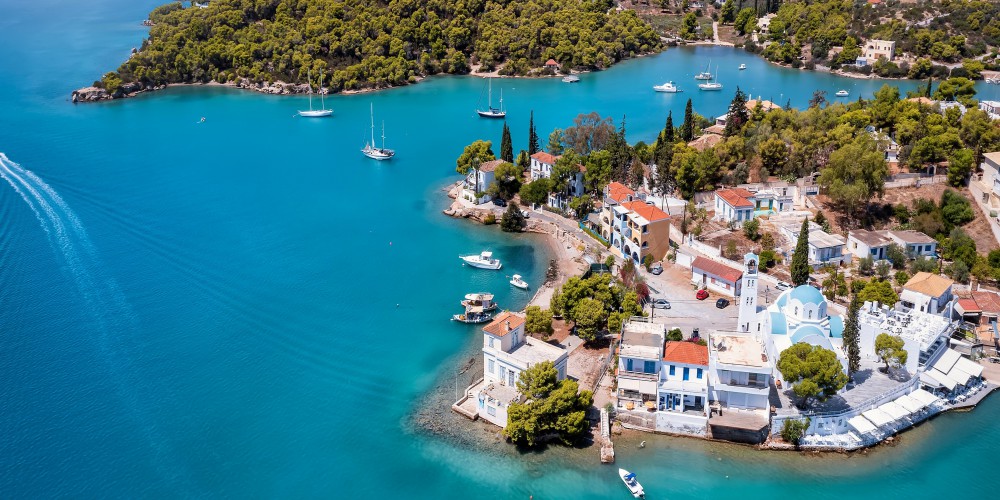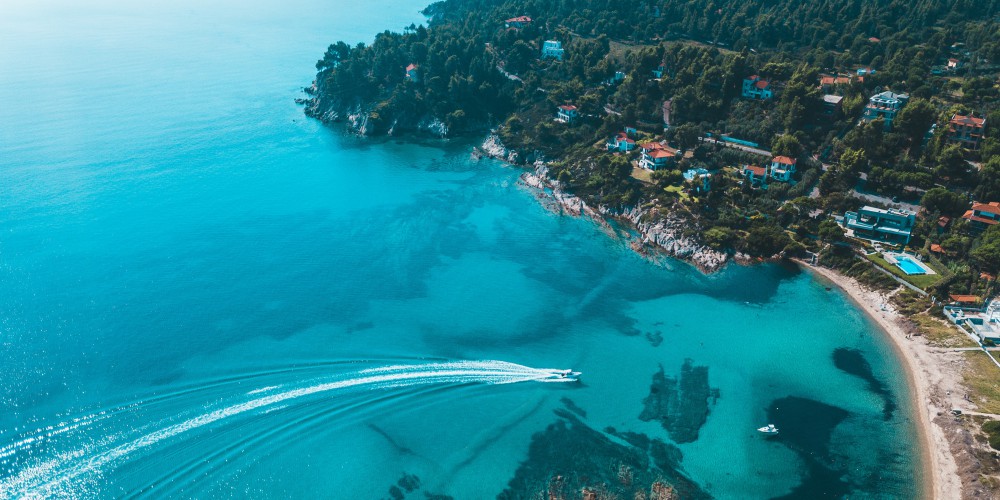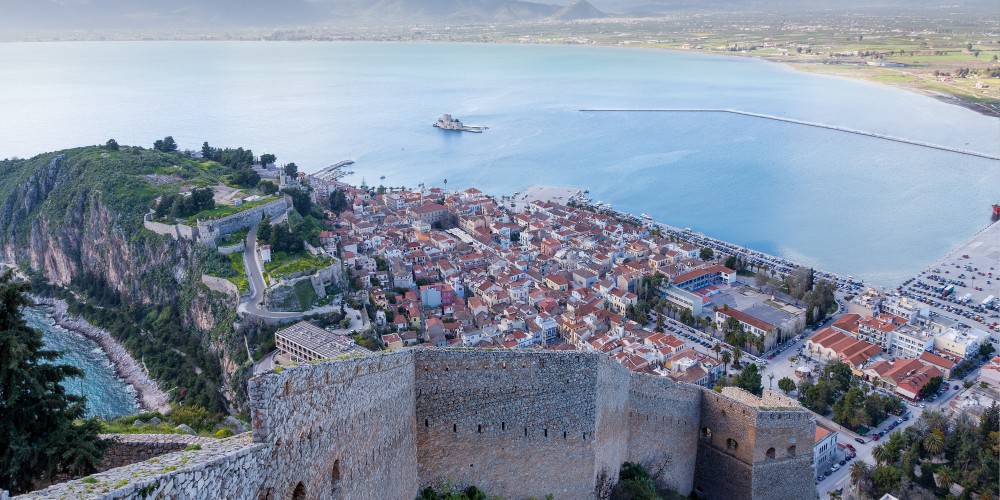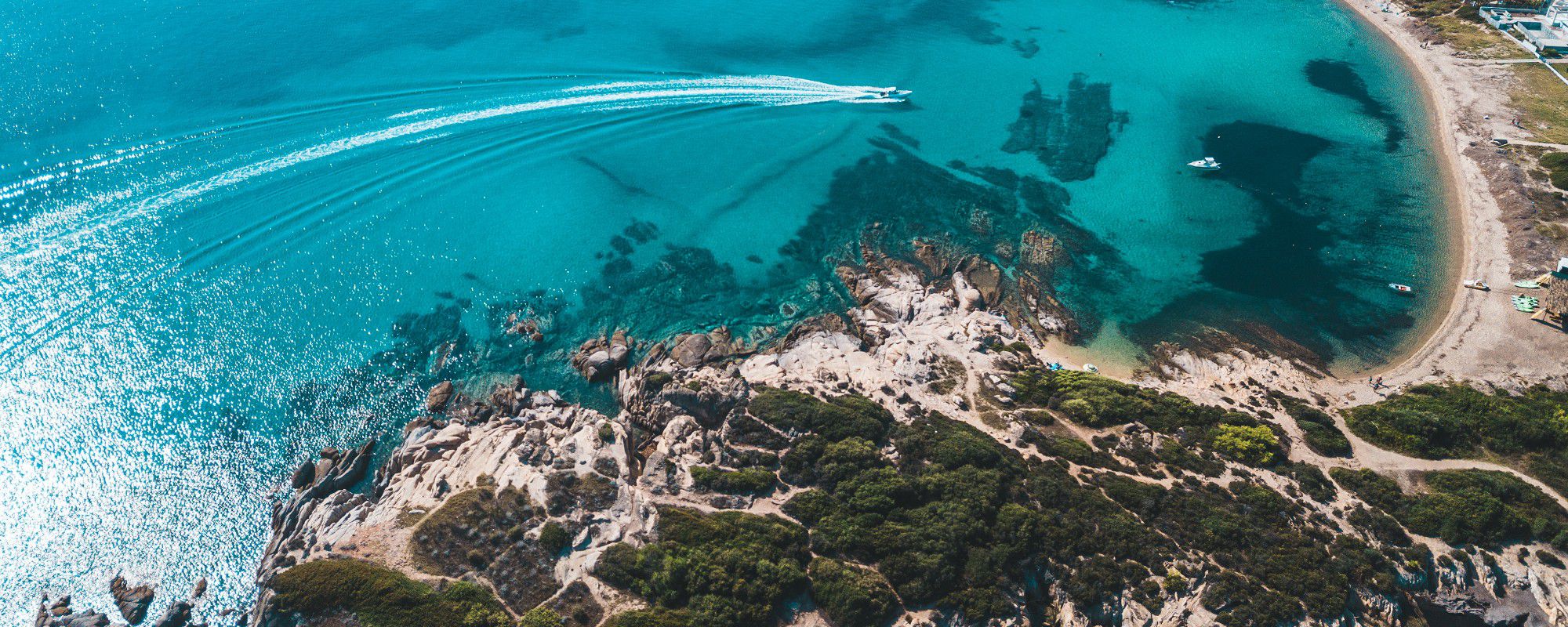
Mainland's beauty: A Guide to Halkidiki
Key Takeaways:
- Halkidiki is located in the northern part of Greece, about an hour's drive from the city of Thessaloniki.
- The region is home to some of the most beautiful beaches in Greece, including the famous Blue Flag beach of Vourvourou.
- The region is home to several historic landmarks, including the monastic state of Mount Athos, which is a UNESCO World Heritage Site.
- Halkidiki is also known for its picturesque villages, such as Afitos, Nikiti, and Ouranoupolis.
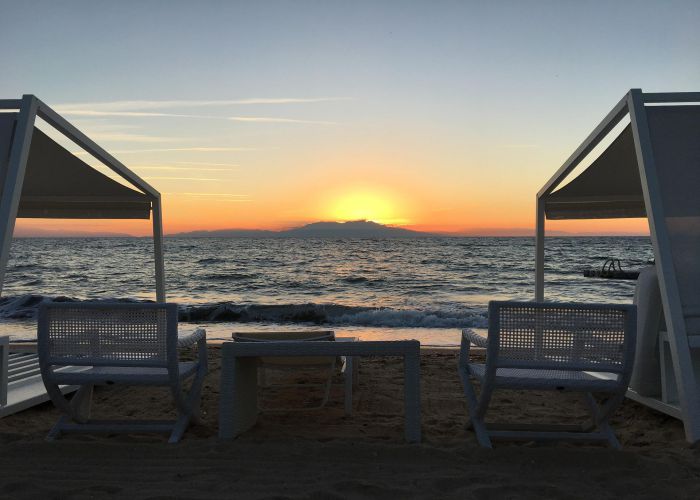 Organized beaches in Halkidiki - credits: pixabay.com
Organized beaches in Halkidiki - credits: pixabay.com
Every breathtaking summer trip must consist of at least 2 things: the smell of pine and the sensation of the wave crashing on your feet. Here is a travel guide that will give you both.
One of the most beautiful contrasts of green and blue in Greece but also a flagship destination of Greek tourism, which is constantly renewed without losing its identity, Halkidiki is a unique holiday destination that fits many different styles and budgets while being far away from Athens.
Forest and sea, picturesque villages, luxury resorts, and beach bars that are more than comparable to the ones in Athens, gourmet restaurants, turquoise waters, and postcard-like sunsets make for a setting that exceeds the expectations of its visitors.
Here is a guide to Halkidiki, Greece, that will help you discover more of the mainland Greece’s beauty and will make you choose one of our Greece vacation packages including a destination that might not be an island and doesn't need you to reach by boat, but promises you won't miss any of the country’s best qualities.
The Location of Halkidiki, Greece
Coast of Halkidiki, Greece - credits: holidayify.com
Halkidiki is located a stone's throw from Thessaloniki and the three peninsulas of Kassandra, Sithonia, and Athos offer holidays for all tastes: intense nightlife in Kassandra, tranquility, and exotic beaches in Sithonia peninsula, and a serene family atmosphere on Mount Athos.
What’s more, the mountains of Halkidiki also offer a plethora of opportunities for tours in the picturesque villages around the beautiful forests of Holomontas and Stratonikos.
There are several islands nearby from the coast of Halkidiki, which are worth discovering by boat, with the only inhabited one being Ammouliani, which boasts shallow and calm shores.
Adventure enthusiasts will find more than 20 marked trails throughout Halkidiki and about 17 cycling routes, which pass through Holomontas and the Natura-protected areas.
There, you will also find prestigious diving centers and water sports centers. The accommodation options are endless, from rooms to let and picturesque hostels to famous, award-winning, and luxury complexes.
How to reach Halkidiki in Northern Greece
Halkidiki - credits: travelbeam.co.uk
As mentioned above, you won't need a boat to reach Halkidiki. You can drive to Halkidiki through the existing road network. The beauty of Halkidiki is unique and having your own car is the best opportunity to explore every corner of it. This way you can reach places that are not accessible by any means of public transport.
Nevertheless, you can also travel inside Halkidiki with the buses of Halkidiki KTEL, which serve regular routes between most areas.
It is probably the easiest and more carefree way to get around Halkidiki without your car, while we should mention that there are also regular itineraries from Thessaloniki and Athens to Halkidiki and vice versa.
Unfortunately, Halkidiki does not have its own airport. However, Macedonia International Airport of Thessaloniki is the nearest airport which is located just 16 km from the center of Thessaloniki and serves guests who want to travel by air.
What’s more, the nearest port with continuous ferry services is the one in Thessaloniki and Kavala. There are no ferry services to areas of Halkidiki.
Last but not least, Halkidiki does not have a railway network. The nearest train station is in Thessaloniki. If you decide to visit Halkidiki by train, you should make a trip to Thessaloniki and from there, go to any part of Halkidiki you want by KTEL or Taxi.
Best things to do in Halkidiki; explore the region easily and efficiently
1. Swim on sandy beaches beneath pine trees
Beaches within dense pine forests in Halkidiki - credits: letsgotours.com
A trademark of Halkidiki, its magical sandy beaches that compete with the ones on the Greek islands, push every year thousands of visitors to get to know them and enjoy them up close.
With a total coastline of 550 km, it offers pristine beaches for all tastes and moods, vibrant with beach bars and water sports that are usually found on the Kassandra peninsula, such as Fourka, Kallithea, Pefkochori, and Paliouri.
On the peninsula of Sithonia, you can find much quieter beaches which are usually preferred by camping enthusiasts, since the area, among other things, offers organized campings, several of which are famous, such as Armenistis and Kalamitsi.
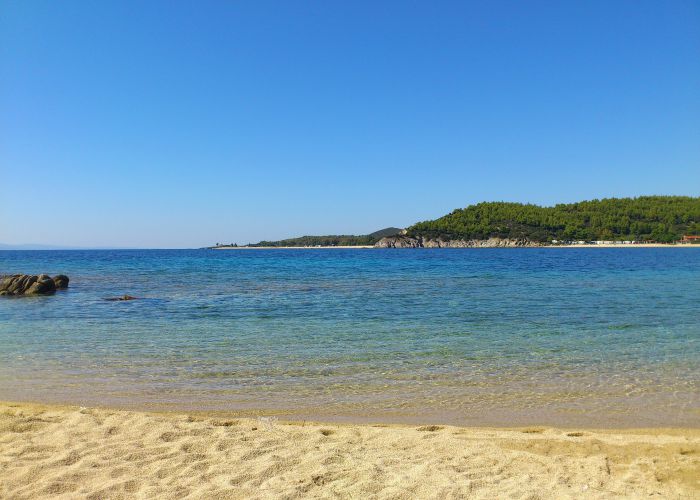 Halkidiki's coastline - credits: pixabay.com
Halkidiki's coastline - credits: pixabay.com
Moreover, the peninsula of Athos is also perfect for quiet family holidays and has some of the most amazing beaches in the region, such as Ierissos, Olympiada, Kampos near Pyrgadikia, and the beaches on the island of Ammouliani, among others.
In Sani, you will find the most well-organized beach on the first leg -apart from the famous Sani festival. In Poseidi and Kypsa, you will admire impressive sunsets and you will indulge in watersports in the Aegean sea.
On the lonely beach of Mola Kalyva, you will feel like a hermit, while on the coasts of the largest villages you can indulge in scuba diving and dancing in some of the best beach bars in Greece.
In Glarokavos on the beautiful beach of the same name, in Pearl of Kallithea, Aqua Mare in Fourka, Navagos and Lefki Ammos, the new hot spot in Paliouri, you will definitely find the perfect spot to spend the night with a refreshing cocktail in hand.
If you want to dive from the rocks, among the pines, Kavourotripes is the perfect place for nudists and non-nudists. For a calm swim among imposing white rocks, head to Karydi, near Vourvourou. For castles with white sand and turquoise dives, do not skip the Armenistis.
In Elia, the scenery is enchanting, despite the organized beach in front of the crystal clear waters. In the Paradise of Nikiti and in Lagomandra of Neos Marmaras, the sandy beach, the rocks, and the vegetation are enough to steal your breath.
2. Drop anchor in Porto Koufos and listen into ancient Greece
Porto Koufos - credits: halkidiki.gr
Porto Koufo is a bay and a natural small port with an entrance direction from South to North. It is located in the Toroneos Gulf near the south-western end of Sithonia in Halkidiki. It belongs to the Municipality of Sithonia.
It is one of the safest coves and anchorages in Northern Greece. Although its entrance is near the west side of the peninsula, the bay turns 90 degrees to the north thus providing safe coverage in all weathers, even during strong winds.
Its entrance is about one nautical mile, while the width of its entrance, which opens between the capes Drestinaga to the north and Pagona to the south, reaches about 620 m.
Within the bay, several smaller secluded coves are created, the most important of which is the inlet and the ‘Gura’ cove, which is located in front of the ruins of the former large Turkish barracks. The edges of the entrance are about 90 m high and rocky.
At the north entrance, between the end of Drestinaga and the end of Antikoufo, the first cove is called ‘Korakas’ and is 2.5 steps wide and 9 m deep.
It is noted that the entrance of Porto Koufo bay at a distance from the sea is indistinguishable. For this reason, there are two lighthouses on either side of the entrance. During the day, a safe entrance is achieved by aligning the middle of the entrance with the Trikrano peak of Mount Athos.
During World War II, it was used by German submarines due to its strategic location, which provided natural air cover, direct access to the Aegean, and at the beginning of the bay on Akra Antikoufo, they had installed a machine gun guarding its entrance.
Today, the port of Porto Koufo has been adapted into a small fishing port, but with a limited facility for mooring small tourist boats and yachts.
3. Discover Petralona Cave and the 700,000-year-old man
Petralona Cave - credits: halkidiki.gr
Petralona cave is located at the western foot of Mount Katsika in the community of Petralona. Formed in the limestones of the Upper Jurassic, it has an area of about 10,000 sq.m., with large rooms decorated with colorful stalagmite formations that date back to early human life.
The visitor, after crossing the horizontal artificial tunnel, reaches the cave and, following the arranged route, about 300m long, passes through its main rooms and chambers, where he has the opportunity to admire this magnificent creation of nature.
The original entrance of the cave today is sealed. It was a circular opening on the roof of a large hall, from which people and animals entered and left the cave for many tens of millennia. From this opening, stones, and soil also fell inside, forming over the years a huge cone, which gradually completely blocked the entrance.
In 1959, a villager from the village of Petralona in Halkidiki discovered the cave by accident. The following year, a fellow villager found something in the cave that he described as a "giant monkey skeleton." In fact, he had discovered the oldest human bones in Greece.
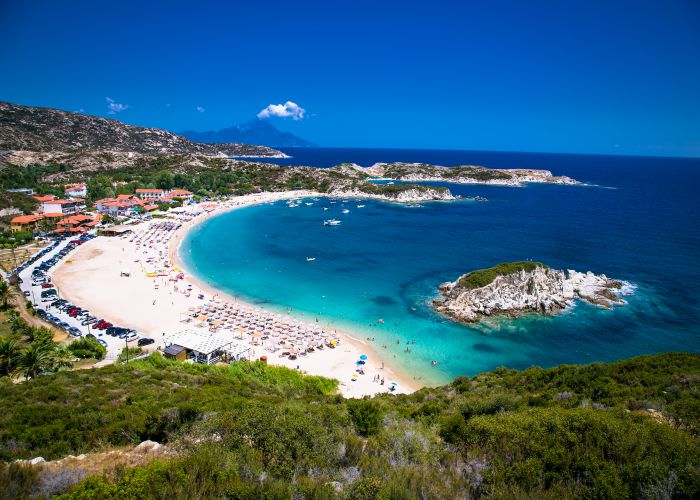 Kalamitsi beach on the east coast of Sithonia on Halkidiki, Greece - credits: Aleksandar Todorovic/Shutterstock.com
Kalamitsi beach on the east coast of Sithonia on Halkidiki, Greece - credits: Aleksandar Todorovic/Shutterstock.com
It was a skeleton half-lying with its head resting on the wall of the cave, while around it there were bones of other prehistoric animals. All the bones were covered with stalagmite material, which had been deposited drop by drop for millennia.
Five decades after its discovery, most scientists today classify the "Petralona Man" as a species known as Homo Heidelbergensis (from a lower jaw discovered near Heidelberg, Germany in 1907).
The man of Heidelberg is the link that connects the most primitive Homo ErectusHomo Sapiens. Bones with similar characteristics have been found in various parts of the world, which allows us to assume that Homo Heidelbergensis covered a large area that stretched across Africa, Europe, and Asia.
Leaving a large margin of error, archaeologists today believe that the Archangel of Petralona lived the period from 400 to 250 thousand before today.
Some argue that Halkidiki's Petralona man is the oldest man found in Europe, which turns out to be wrong after discoveries in Northern Europe and Spain, with specimens, respectively, a little older or even twice as old as ours.
You can say the Petralona man was one of the first male visitors to Halkidiki and he liked it so much he decided to stay there forever!
4. Admire the advanced city planning of Ancient Olynthos
Ancient Olynthos - credits: halkidiki.gr
To the east of the homonymous village, 80 km from Thessaloniki and 25 from Polygyros, lies the ancient Olynthos, at the mouth of the Toroneos Gulf.
The ancient town was built between two plateaus, of which the south was inhabited first, in a way that followed the fluctuations of the ground. There is placed the archaic municipality, which was burned by the Persians and completely abandoned.
The archeological site is one of the most fascinating archaeological sites you will come upon in Greece's mainland destinations. With an area of about 500 crowns, it includes the two hills and an area at their foot, where the outpost and a building that houses infrastructure for visitors and at the same time hosts a photo exhibition.
From the entrance of the archeological site, an uphill path leads the visitor to the two hills. The archaic city, built with a rudimentary urban plan, occupied the whole hill. Two avenues are preserved, along the eastern and western ends of the site, which communicated with each other through transverse roads.
 Robinson beach on the east coast of Sithonia on Halkidiki, Greece - credits: Aleksandar Todorovic/Shutterstock.com
Robinson beach on the east coast of Sithonia on Halkidiki, Greece - credits: Aleksandar Todorovic/Shutterstock.com
On one avenue, shops, small houses, and storage pits were located, while in the northern part of the hill, the administrative center was excavated: the market and the rectory.
The classic city was founded on the northern plateau, in an area of 600 x 300 m. This area was divided into 64 building blocks, which were separated by horizontal and vertical streets, some of which in the north-south direction were up to 7 m wide.
Each building complex had ten square meters of land with five houses on each long side. The houses were two-storeyed on their north side and had a paved courtyard on the south.
Each house consisted of the man, who was on the ground floor, usually decorated with mosaic floors with plants, but also anthropomorphic compositions, where dinners were held, the 'arbitration', the 'house', the 'optanion', the 'valanion' and from the 'imeros' (chamber) and the 'gynaikonitis' on the floor.
Very important for the research are also the rich houses, which were located outside the walled part of the city in the east of the northern plateau, in the aristocratic suburb. Here were excavated some of the most remarkable specimens of ancient villas: the mansion of Good Luck, the Actor, and the Twin Loves.
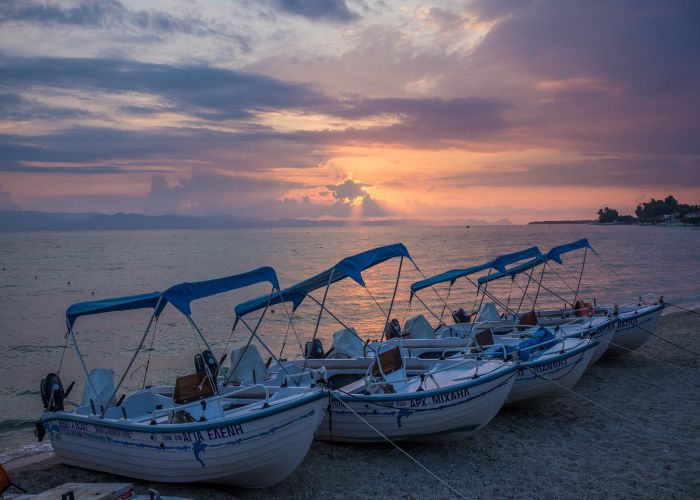 Fishing boats in Halkidiki - credits: pixabay.com
Fishing boats in Halkidiki - credits: pixabay.com
Both the archaic and the classical cities must have been fortified. However, no remains have been found on the walls of the archaic one. Since the fortification of the classical one, small parts of the walls have been discovered on the northern plateau, which, however, are not enlightening for the way they were built. Researchers speculate that it was protected by a wall of unbaked bricks that surrounded it.
Among the public spaces that should be mentioned is the Agora, which is located in the south, the public fountain and probably the public mosque, which should be located in the west and the theater, which should be sought in a pit in the south. side of the southern plateau.
At the southern end of the same plateau, the foundations of a Byzantine tower of the 12th century AD are also preserved. and traces of habitation of the Neolithic era.
Finally, the necropolis was located to the west, outside the walls, where significant rewards have been found, proving the wealth and high standard of living of its inhabitants.
5. Marvel at Potidaia Canal, dating back thousands of years
Potidaia Canal - credits: grekomania.ru
The first leg of Halkidiki, in the seaside town of Nea Potidea, is cut in two. The peninsula of Kassandra is cut off from the main Halkidiki and looks like an island. All this is thanks to a canal 1,250 meters long and 40 meters wide, also known as the Potidaia canal.
Potidaia canal that is unknown exactly when it opened. It is considered certain, however, that it existed before the 1st century AD, with the work being completed, most likely, by Cassander 300 to 400 years earlier and taking its final form recently, between 1935 and 1937.
The construction of the canal that connects Toroneos with the Thermaic Gulf facilitated navigation but also protected the municipality.
Hence the fortifications along its length, the Justinian Wall, from which some are preserved today, and the foundations of the western tower to Thermaikos that are bathed by the sea.
6. Explore Mount Athos
Mount Athos - credits: halkidikiyachts.com
Mount Athos is one of the most special mountains in Greece for many reasons. Geomorphologically it impresses with its conical shape that emerges abruptly and sharply through the waters of the sea and its top is shaped ‘to point to God’ as some monks used to say.
From ancient times it holds a special place in the metaphysical quests of people and under a peculiar regime of centuries, is known to be dedicated to the worship of the Virgin Mary with access within the peninsula but also the approach, to be strictly forbidden to women.
Even the monastic institutions are dedicated to the memory of male saints while the only woman who "holds a place" on Mount Athos, except the Virgin Mary, is her mother, St. Anna, who is honored in the homonymous Skete from where we would take the uphill for Mount Athos.
This is one of the most painful ascents in Greece -perhaps the most tedious- as it starts from zero sea level and after crossing literally the whole mountain, you reach a higher altitude at the top, at 2033 meters.
7. Travel to Aristotle’s hometown and test his theories
Stageira - credits: greece-is.com
Stageira is a village of Halkidiki, which is located on its northeastern side, at the beginning of Mount Stratonikos. This village has become mainly known, due to the fact that it is the birthplace of the most important philosopher, Aristotle.
Stageira is built on the main road Thessaloniki-Ouranoupolis, at an altitude of 500 meters, and is located next to today's Olympiada, while only 73 km from Thessaloniki.
The census conducted in 2001, showed that Stageira is inhabited by about 400 permanent residents. As for the ancient Stageira, it was built on a coastal location, 10 km away from the current mountain settlement.
Stageira has now been transformed into the largest and most important historical site in the whole of Halkidiki. It is noteworthy that archaeological research began in 1960, led by archaeologist F. Petsa, while continued more intensively in 1990, with archaeologist Costas Sismanidis.
Visitors from northern Greece, but also from other regions, constantly choose Stageira, in order to explore them and learn about the events that unfolded there. Indicative of the size of the historic site, is the fact that to see every aspect of it, it takes at least 2-3 hours of non-stop tour.
Recently, the archaeologist Costas Sismanidis, after years of research, revealed that in the area of Stageira there is also the tomb of Aristotle, a position which has been supported by other archaeologists in the past.
In any case, each person has different views on different issues and a visit to the site is certainly enough to contribute to the formation of everyone's opinion and the dissemination of history.
8. Walk around the traditional villages of Arnaia and Afitos
Arnaia - credits: greece-is.com
The most beautiful village of Halkidiki is mountainous and leaves no one unmoved, especially if they're fond of the mainland destinations of the country. Therefore, we highly recommend you make the sacrifice and leave the wonderful beachfront of Halkidiki, to dedicate some of your time to the traditional settlement of Arnaia.
Arnaia is a town with several inhabitants engaged in animal husbandry and agritourism. The village has several accommodation options, which are housed in traditional buildings, some of them of historical significance.
In the main square of Arnaia, called ‘Aristotelous’, there are taverns and several cafes both modern and traditional. Enjoy a cool drink under the shade of the plane tree, before starting our tour of the historic settlement.
Apart from Arnaia, Afitos is the most touristic of Halkidiki’s villages. That is because of the homonymous beach, which is one of the best on the first leg, but also because of the traditional settlement and the many options, it offers in the entertainment. Prefer to visit the village in the afternoon.
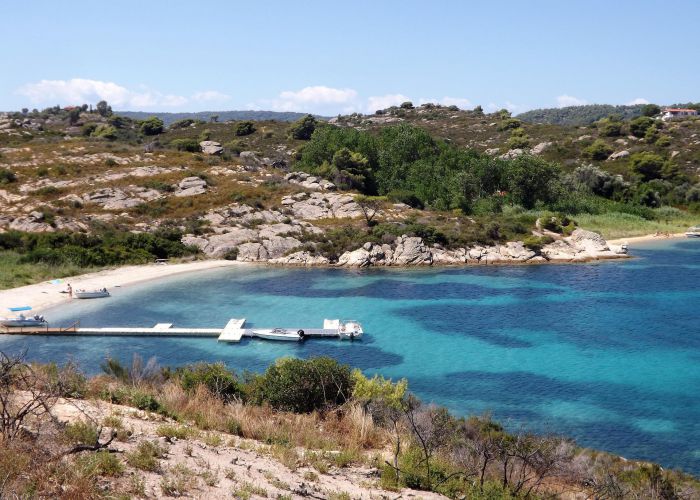 Diaporos, Halkidiki - credits: pixabay.com
Diaporos, Halkidiki - credits: pixabay.com
Leave your car in the parking lot and start your walk from the church of Taxiarches. Cross all the way to the end of the uphill. In front of you, you will find a natural balcony overlooking Toroneos Bay, to admire the sunset.
Do not hesitate to visit the Folklore Museum 'Building Aletra' and the church of Agios Dimitrios, which were built in the 19th century and are reference points for the picturesque settlement.
Our suggestion is to book your evening, enjoying your drink, in the yard of one of the tasteful cafe bars in Afitos. Almost every night various music groups are hosted.
9. Discover your passion for fir trees in Taxiarchis village
Taxiarchis Village - credits: travelpassionate.com
Taxiarchis in Halkidiki is its mountainous face. A verdant village, an area of incomparable beauty, with magnificent views in every direction. At its foot are the villages of Holomontas, drowned in the green which surrounds them from everywhere.
But the pre-eminent village of Holomontas is Taxiarchis, below its peak, in the center of the mountain range, where all the picturesque mountain roads meet. This place is full of firs. All the families are engaged in the cultivation of firs on this beautiful mountain.
Once you reach Taxiarchis you will see at the entrance of the village the fountain 'Sipotoura', which is an important attraction. The 'Kato Pigadi' fountain is also wonderful.
The traditional houses and old mansions scattered in the village, the stone-built central square, Hani, the central basilica with a domed church, and the various chapels in and around the village will steal your heart.
10. Visit the villages of Kassandra
The villages of the westernmost peninsula of Kassandra - credits: kassandra.gr
Starting from the northern part and moving along the east coast, we first meet Nea Fokea, a picturesque fishing village built on the hill that "rests" on the blue sea.
The Byzantine tower of the area, as well as the medieval building of Stavronikitas that dominates a little further down in the cosmopolitan Sani, stand as reminders of old grandeur, next to the Aegean sea.
If you still prefer a more intense life, Kallithea and Hanioti follow the route and have to line up the heavy artillery of fun, as there are transferred the biggest clubs in Thessaloniki.
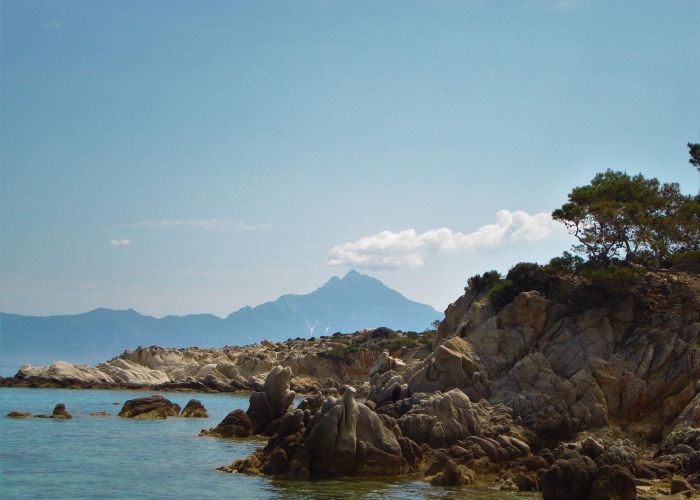 Halkidiki, Greece - credits: pixabay.com
Halkidiki, Greece - credits: pixabay.com
If you have a car, continue the route to the amphitheatrically built Kriopigi to taste the local delicacies or to the village of Polychrono, around which you will discover a pond with water turtles.
Pefkochori and Paliouri, almost at the edge of the first leg, have beautiful beaches and some beach bars without the overcrowding of Kallithea.
The nightlife finds good shelter in the coastal bars of Fourka, while the fishing village of Nea Skioni offers the option of a cool break for fresh fish and relaxation, unique experiences that have the aroma of Greece.
What and where should I eat?
Greek food - credits: Toms Auzins/Shutterstock.com
Apart from its natural beauty and emerald beaches, Halkidiki enchants visitors with its food that will satisfy all your senses. The gastronomic tradition of the area is long and the various influences, mainly from the Macedonian and the simple Mount Athos cuisine, have created a wonderful mosaic of flavors.
You shouldn't miss looking for and trying local recipes and special products that will complete your Halkidiki experience in the most delicious way.
One product, exclusively of mountainous Halkidiki, is Mountovina or the tsipouro of beekeepers. You will find it mainly in Arnaia. This is tsipouro from the pure honey of the area, a sweet drink with a full taste.
It is prepared by distilling water in which they put the honeycombs that were broken during the collection of honey. After harvesting the honey from them, they ferment the remaining sugars and distill the fermented must-honey, to prepare the Mountovina.
 Halkidiki - credits: Marjan_Apostolovic/Shutterstock.com
Halkidiki - credits: Marjan_Apostolovic/Shutterstock.com
'Olympiada' is the most famous among the area's fish tavernas for its mussels. Huge, clean, baked, and delicious. There, the waters of Strymon flow into the Strymon Gulf, and the composition of the seawater is ideal for the mussel. You will find various specialties: from steamed, fried, and saganaki to mussel meatballs, mussel risotto, and more.
Mushrooms of all kinds, which grow in large numbers in mountainous Halkidiki, and central Macedonia in general, are also delicious. You can try them either simply fried and grilled, or in variations such as mushroom pies, mushroom meatballs, etc.
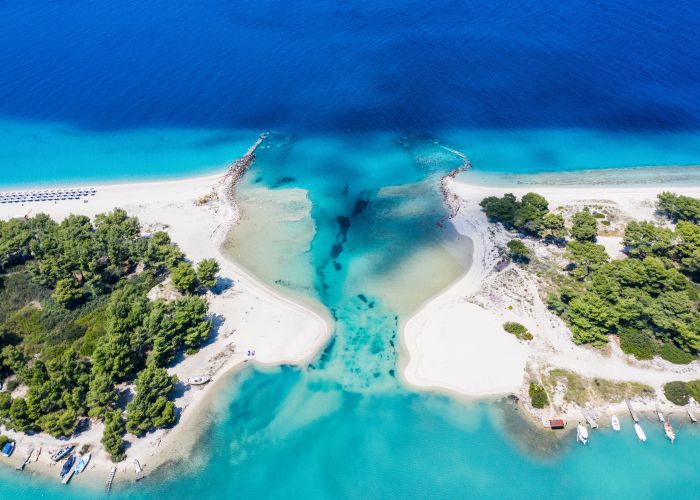 Aerial drone view of Port Glarokavos and lagoon beach in Kassandra penisula in Halkidiki, Greece - credits: Chawranphoto/Shutterstock.com
Aerial drone view of Port Glarokavos and lagoon beach in Kassandra penisula in Halkidiki, Greece - credits: Chawranphoto/Shutterstock.com
If you are in Afitos, 'Vouka' is a good reason to stay a little longer. It is located where the tavern Klimataria was housed in the old days until 2000 and is the ultimate destination for food on the main road of the village. In 'Vouka', you will have the opportunity to taste a menu made with love from local products.
If you want to enjoy your meal at a table next to the beach of Nea Plagia, the ideal choice for you will be a few kilometers outside of Thessaloniki, in ‘Kochyli.’ In its beautiful garden, you will be able to enjoy your meal by the sea, with dishes that will enhance your culinary experience and will convince you to visit this restaurant again and again.
Last but not least, we cannot omit from the list 'Tomata.' One of the 25 best restaurants in Europe, according to the English Conde Nast Traveler, and its chef, Chrysanthos Karamolegos, is one of the five most creative Greek chefs, according to Greek gastronomic criteria. 'Tomata' is located at Sani Resort, and the menu includes dishes that praise the return to the values of healthy food.
Final Thoughts
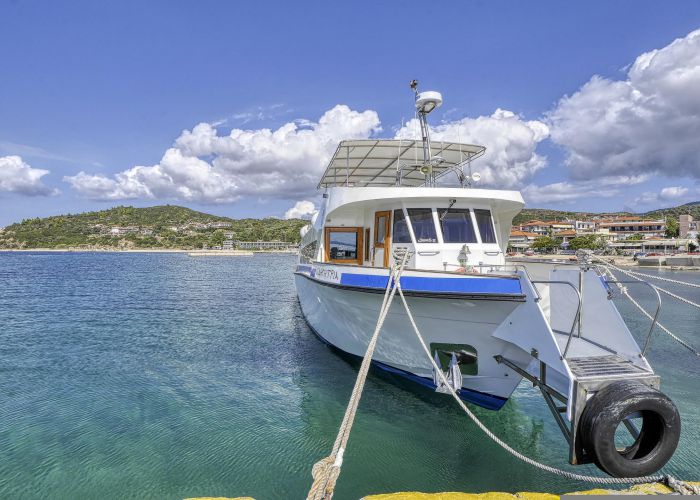 Athos, Halkidiki - credits: pixabay.com
Athos, Halkidiki - credits: pixabay.com
Halkidiki is one of the most developed tourist destinations for summer holidays but also an area of special natural beauty.
Clear blue waters, countless small coves and beach resorts, luscious nature, and picturesque villages compose an idyllic landscape you will never come across in any other part of the world and you will never forget.
What's more, the amazing Mediterranean climate, clear blue waters, and incredible Greek cuisine, alongside the friendly locals and the close proximity to Thessaloniki International Airport, offer many valid reasons for picking Halkidiki for your next summer holiday.
Visiting Halkidiki, the region of Greece that manages to enchant even its locals with its beauty, will make you see exactly why there is more to Greece than its beautiful Greek islands!
Frequently Asked Questions
What is the best time to travel to Halkidiki?
What is Halkidiki known for?
Is Halkidiki a party island?








